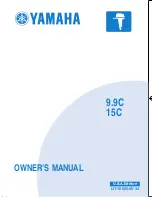
Block Diagram
http://www.motorola.com/computer/literature
3-5
3
SCSI Interface
The MVME2603/2604 VME module supports mass storage subsystems
through the industry-standard SCSI bus. These subsystems may include
hard and floppy disk drives, streaming tape drives, and other mass storage
devices. The SCSI interface is implemented using the Symbios 53C825A
SCSI I/O controller at a clock speed of 40 MHz. The SCSI I/O controller
connects directly to the PCI local bus.
The MVME2603/2604 routes its SCSI lines through the P2 connector to
the MVME712M transition module (as illustrated in
Figure 1-21 on page
1-47
). The SCSI control lines have filter networks to minimize the effects
of VMEbus signal noise at P2.
The SCSI bus is 16-bits wide in systems that support the VME64 extension
(that is, those equipped with 5-row, 160-pin VME backplane connectors).
The SCSI bus is 8-bits wide in VME systems that do not support the
extension. Refer to the MVME712M User’s Manual, listed in
Appendix D,
Related Documentation
, for the pin assignments of the SCSI connectors
used on the transition module. Refer to the Symbios 53C825A data manual
for detailed programming information, also listed in
Appendix D, Related
Documentation
.
SCSI Termination
The individual configuring the system must ensure that the SCSI bus is
properly terminated at both ends.
In MVME712M I/O mode, the MVME2603/2604 base board uses the
sockets provided for SCSI bus terminators on the P2 adapter board used
with the MVME712M. If the SCSI bus ends at the adapter board,
termination resistors must be installed there. +5V DC power to the SCSI
bus
TERMPWR
signal and termination resistors is supplied through a fuse
located on the adapter board.
In MVME761 I/O mode, the P2 adapter board used with the MVME761
has a jumper to enable/disable SCSI bus terminators. +5V DC power for
SCSI termination is supplied through a polyswitch located on the adapter
board.













































